Concerns Linger Over Granite Pointe Project; Preservation on the Table
Opinion Advocates for ideas and draws conclusions based on the author/producer’s interpretation of facts and data.
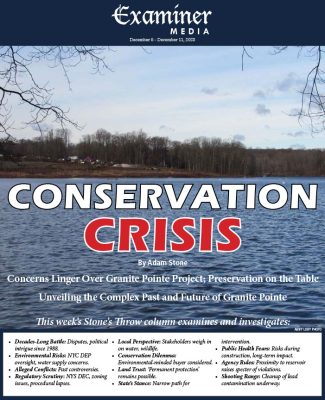 CONSERVATION CRISIS
CONSERVATION CRISIS
Concerns Linger Over Granite Pointe Project; Preservation on the Table
Unveiling the Complex Past and Future of Granite Pointe
This week’s Stone’s Throw column examines and investigates:
- Decades-Long Battle: Disputes, political intrigue since 1988.
- Environmental Risks: NYC DEP oversight, water supply concerns.
- Alleged Conflicts: Past controversies.
- Regulatory Scrutiny: NYS DEC, zoning issues, procedural lapses.
- Local Perspective: Stakeholders weigh in on water, wildlife.
- Conservation Dilemma: Environmental-minded buyer considered.
- Land Trust: ‘Permanent protection’ remains possible.
- State’s Stance: Narrow path for intervention.
- Public Health Fears: Risks during construction, long-term impact.
- Agency Rules: Proximity to reservoir raises specter of violations.
- Shooting Range: Cleanup of lead contamination underway.
This piece is the third installment in a Stone’s Throw column series about issues impacting our local environment.
By Adam Stone
First off, let me stipulate this: It’s certainly become relatively commonplace to clean up contaminated sites for construction, and it’s more than possible to employ sophisticated engineering to develop housing close to a reservoir while at least mitigating the risk of long-term pollution or habitat disruption.
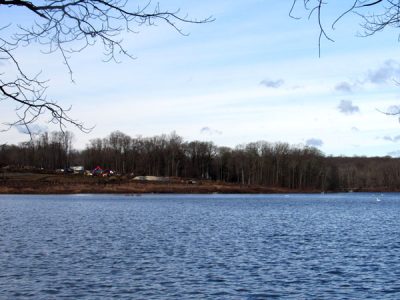
But it sure seems like a safer bet to forgo the potential peril when possible, and favor public health and civic virtues over any developer’s business interests in building luxury homes.
Beyond that, even when the miracles of modern engineering limit explicit ecological and water supply danger, commonsense conservation should still ideally trump bottom line financial considerations.
That basic premise sets the philosophical framework for a review of the troubled Granite Pointe project in Somers, which has a long and tortured history dating back three-plus decades, beset by legal tangles, startling environmental revelations and alleged procedural breaches.
For starters, even while assuming the best of intentions, it’s hard to accept the decision-making of the Somers Planning Board for ultimately granting developer John Harkins final (conditional) subdivision approval to build 23 homes on 28.8 forested acres nestled along the Amawalk Reservoir.
Yes, that Amawalk Reservoir: the gorgeous gem at the intersections of routes 202 and 35, which is owned by the New York City Department of Environmental Protection (DEP) and delivers drinking water for about 35,000 to 40,000 Yorktown and Somers residents, not to mention city folks.
History
The housing subdivision plan features 23 one-acre lots on a pair of parcels situated along the almost 29 acres of land.
Yet some locals have long proclaimed that the property should be zoned for two acres.
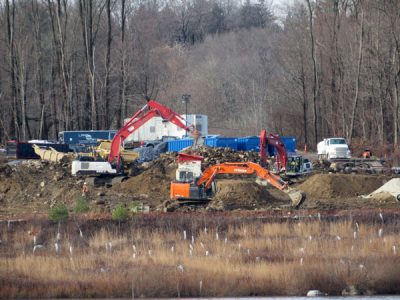
“New subdivision application was granted zoning exemption of one acre, even though the Town of Somers had formally moved to a two-acre residential zoning requirement in 1994,” said a former town Conservation Board member who requested anonymity to speak freely about a controversial topic.
In the early days of the project, local activists claim that the Somers Planning Board cut corners in the environmental review process and bypassed any genuine effort to robustly engage the public.
In addition, opponents have complained over the years about the developer’s alleged political ties to key local officials while also raising concerns about conflicts of interest during critical project phases in the 1990s and early 2000s.
Subdivision approval was granted in 2002 and 2003 based on questionable Environmental Impact Statement (EIS) findings, the opponents claim.
Oh Shoot
By 2003, the already unfortunate proposal became infinitely more problematic when concerned citizens exposed the property’s past use; it had previously been a trap and target shooting range for about 30 years, from 1938 to 1968, bringing a layer of severe complexity to cleanup efforts.
The site was dangerously polluted.
“These activities have contaminated the ground surface and soils with lead,” a February 2013 New York State Department of Environmental Conservation (DEC) decision document later noted about the past shooting range on the land revealed by citizen researchers.
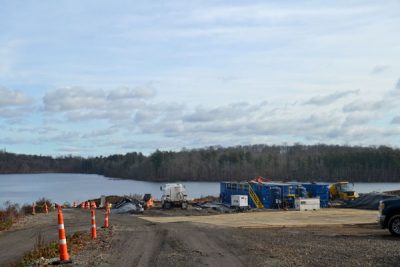
Final subdivision approval was rescinded in 2004, leading to a Supplemental Environmental Impact Statement (SEIS) focused on the contamination.
Granite Pointe was reapproved in 2015, but neighbors opposed to the project secured the services of a local land use attorney, William Maker, to contest the development with an Article 78 legal action.
However, in 2016, state Supreme Court Justice Gretchen Walsh dismissed the argument on procedural grounds, claiming the project opponents possessed no legal standing.
“An appeal was not filed, as citizens were financially and practically discouraged from doing so,” a longtime project opponent told me.
Cleanup Crew
Ultimately, the DEC stepped in to clean the property. In April, the DEC initiated the heavy-duty remediation efforts.
“The 7.4 completely annihilated, formerly forested acres will not be replanted with tree species similar to those removed or with any other vegetation, except for meadow grass seeding,” the same project opponent who requested anonymity lamented.
Although the work to sterilize the site is costing taxpayers many, many millions, the DEC told me last week that an official expense estimate isn’t currently available.
But a former local conservation official said the deforestation, excavation and hauling away on flatbed trucks of “12,000 to 15,000 metric tons of soil” will cost taxpayers up to about $12 million.
“The estimated range for this work is: $8 Million to $12 Million,” a bid description from Mar. 22 and available online on the Construction Journal website does state.
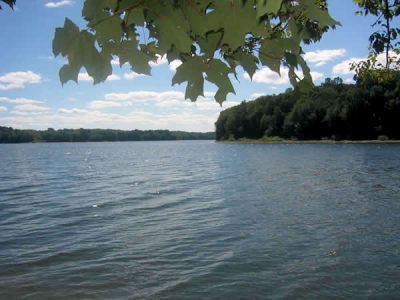
Project opponents also point to the fact that the site, in 1990, was designated as one of the region’s Critical Environmental Areas, also known as a CEA.
In other words, it should never have seemed like a prudent place to build homes in the first place.
(Areas can be designated a CEA by authorities due to unique characteristics, such as rare ecosystems or for being a location of ecological importance. A CEA designation aims to flag an area as sensitive, and dodge an avoidable debacle like the past 30-plus years of Granite Pointe rancor.)
In recent weeks I checked in with various stakeholders to gain a better understanding of where exactly this regrettable project now stands, and where it’s headed.
My Cliffs Notes summary: a pleasant or an unpleasant ending to this saga both remain as distinct possibilities.
Super Duper
A DEC spokesperson filled me in on some of the latest details of the state’s cleanup efforts.
While the department was not available for a telephone interview, a spokesperson, Denis Slattery, did provide answers to questions over e-mail.
“DEC is overseeing the comprehensive cleanup of the Granite Pointe Subdivision site through the State Superfund Program to ensure protection of public health and the environment,” the DEC said in its prepared statement.

If you’re wondering what Superfund is all about, here’s what it entails in a nutshell: identifying and addressing hazardous waste disposal sites.
If a piece of land poses a significant threat to public health or the environment, the state is poised to step in.
As for a timeline, the DEC did tell me that the cleanup – specifically addressing lead contamination in the surface and subsurface soil – is expected to conclude by this coming summer.
While the DEC is responsible for cleanup, the zoning, approval and environmental review process falls under the jurisdiction of the local government, namely the Town of Somers in this case.
Upon cleanup completion, what’s known as a Final Engineering Report (FER) will be made public, and the site likely granted a clean bill of health, from a DEC remediation standpoint at least.
“The disposal of contaminants at the site has resulted in threats to public health and the environment that would be addressed by the remedy,” the February 2013 decision document from the DEC previously declared.
But local project opponents say mopping up the mess will not mitigate the future impact of their bigger picture development fears.
Concerns

Marc Houslanger, now a Carmel resident, is among a handful of nearby neighbors who passionately opposed the project over the course of the past generation, successfully slowing a once fast-moving train.
If housing is built along the reservoir, the clean water supply would be in serious jeopardy, Houslanger has long stressed.
“If they build 23 homes on 29 acres, 200 feet from the reservoir, where’s all that waste, fertilization and toxins going to go?” the retired Mrs. Green’s Natural Market CFO remarked in a recent telephone interview. “It’s going to go into the drinking water. That’s our concern. That’s our biggest concern. Also, the congestion, traffic and everything else.” (The 200 feet proximity assertion as it relates to the most current plan is in dispute; more on that in a bit.)
Diane Houslanger, Marc’s ex-wife, still lives on Gwynne Drive near the site in Somers. She highlighted the risk of residual lead in the soil and the potential health hazards for future residents.
In addition, Diane Houslanger raised questions about the adequacy of the remediation efforts and expressed doubt that the soil could be perfectly decontaminated.
She also pointed out the potential ecological harm with the reservoir serving as a habitat for wildlife, including as a migratory sanctuary for our national bird, the bald eagle.
“There’ll definitely be runoff going into the water from these houses and fertilizer and everything else that goes along with people living where they live,” Houslanger said.
Put another way, state agencies can supply all the assurances they want, but logic dictates that housing infrastructure situated dangerously close to the reservoir creates unnecessary risk in exchange for no substantial societal reward, even if construction plans are entirely up to snuff.
Even though the project has faded from the forefront in recent years, in the aftermath of the DEC’s intervention, the public remediation activity of the past few months has begun to reopen some old eyes.
A fellow local texted Diane Houslanger recently to inquire on the latest.
“She asked whatever happened with Granite Pointe, now that she sees that there’s trucks there all the time and they’re working on it,” Houslanger said. “Maybe now they’re more concerned about it.”
The Houslangers were complainants in the legal challenge scuttled by Justice Walsh’s 2016 ruling.
Background
The Granite Pointe project’s history dates back to 1988 when it was first proposed as a 25-unit housing subdivision.
Sources say the property was later purchased at auction for about $250,000 by present owner and developer John Harkins. (A prior owner abandoned the property once unable to secure permits for development, according to a former Conservation Board member.)

In June of 1990, the subdivision gained approval from the Planning Board by a 4-to-3 vote, allowing septic systems within an approximately 250-foot proximity to the reservoir, The New York Times reported at the time. New York City officials objected.
Ultimately, approval was granted for a 26-home project in 1998. But that effort faced legal challenges from the DEP, leading to the reduction in the number of homes to 23.
Harkins, the developer, when interviewed for a Dec. 14, 2003, New York Times report, estimated the property could fetch for between $15 million and $20 million
(Floating those figures could have been some savvy public negotiating; other sources estimate the value at about $10 million. But the market decides in the end.)
A 2015 Draft Environmental Impact Study (DEIS) is available on the town’s website along with scores of other records related to the project. The study notes the developer touting how the housing would, in his view, provide “positive benefits to land use in the hamlet.”
Harkins got back to me last week over text message, saying he would be available for an interview after Christmas, as he’s currently navigating a personal issue. I wasn’t able to speak to him for this piece.
But I did connect with his project engineer. More on that in a few moments as well.
‘Toll’ Road
In 2015, LoHud investigative reporter David McKay Wilson interviewed Harkins, whose Katonah-based company, Suelain Realty, Inc., first proposed the project about 30 years ago.
The piece detailed an alleged conflict of interest involving Somers Town Attorney Roland Baroni, whose law firm’s website at the time cited a connection to Toll Brothers, a residential builder reported as a prospective buyer of Harkins’ Granite Pointe project lots.
After an interview with Wilson, the Toll Brothers reference was removed from the website, according to the article.
“I’m not aware that Toll Brothers is a potential purchaser,” Baroni told Wilson at the time. “It’s a pure oversight that we didn’t keep our website updated.”
Without getting bogged down on somewhat tangential claims, I did feel obligated to ask Baroni about allegations already circulating in the public domain.
“Our website…had an old client relationship,” he told me in a phone interview last week. “But I haven’t done any work for Toll Brothers, nor has my firm in many years.”
‘Not Bashful’
Toll Brothers, a Fortune 500 company, boasts of being the country’s leading builder of luxury homes.
Frederick Cooper, a Toll Brothers press contact, told me in a brief phone conversation last week that representatives from the publicly-traded company were busy with year-end due diligence, and not likely available for comment.
Baroni, a partner at the White Plains-based law firm of Stephens, Baroni, Reilly & Lewis, said he’s uncertain whether Toll Brothers remains an interested party.
He did note how Granite Pointe has received repeated extensions from the Somers Planning Board in order to accommodate the lengthy cleanup process.
I asked him about the water supply concerns.
“The evidence produced through the environmental studies showed that those claims were not valid,” replied Baroni, who also serves as lead attorney for North Castle and North Salem.
Alphabet Soup
In addition, the town counsel emphasized the roles of regulatory agencies in addressing drinking water issues.
“The agencies involved, DEC and DEP, are certainly not bashful,” Baroni stressed, which is actually a more than valid and relevant historical point.

As for the Toll Brothers factor, local project opponent Marc Houslanger was the only source I spoke to who was able to share a relevant anecdote, recounting a call with a company representative from about a decade ago.
Here’s how Houslanger remembers the exchange: “Toll Brothers is an international corporation. Who am I? A little stalker, right? And I talked to the person there in Manhattan and everything else, and he said, ‘One day, you could fight all you want, but one day, we’re going to take over the corporation. You can’t fight us. We’re just going to take over one day.’ That’s what he said.”
But, Houslanger also said, he’s been proud of his group’s longtime and dogged role as effective Davids battling a perceived Goliath.
“I was very active and we discovered all the pollutants and all the illegal things they do and everything else,” he asserted. “We stopped them for the last 20 years. We kept on bringing up facts, which Somers ignored or didn’t even discover or didn’t investigate.”
North County News
Wilson also reported in his 2015 LoHud piece about state investigators citing Harkins’ company for procedural lapses in notifying the DEC about test pit work, and potentially spreading contamination.
“We dug test holes, and put the dirt back in,” Harkins told Wilson. “We did it by the book. There’s a strong group of people who don’t want it to happen.”
Local and national reporting on Granite Pointe over the years has also explored zoning issues with the subdivision plan.
In fact, when reporting about 15 years ago for our newspaper alma mater, the now-defunct Yorktown-based North County News, my current Examiner colleague Abby Luby chronicled the zoning dispute.
“Given their allegiance to save the mammoth Angle Fly Preserve for open space two years ago, it seems ironic that Somers officials have given a consistent nod to develop Granite Pointe, the peninsula on the Amawalk Reservoir,” Luby wrote at the time.
Angle Fly Preserve, a 654-acre land trust in Somers, opened in 2009, and was acquired in 2006 for more than $20 million, funded by New York City, the Town of Somers, Westchester County and New York State.
At the time of Luby’s article, Somers officials and residents were at serious odds over whether the land should be designated for one-acre or two-acre zoning, and the debate spilled over to newspaper opinion pages.
“The reason for the present one-acre zoning seems to be a mixture of oversight and disinformation and is due to its long history,” a Mar. 5, 2007, letter to the editor in North County News stated, encapsulating the debate.
A source of mine also cited that topic to me last week, noting how a 1995 Granite Pointe application received one-acre zoning exemption to, as they put it, “squeeze as many building lots as possible out of the 29-acre forested promontory after subtracting the remaining acreage for access roads and setbacks.”
As for the developer securing public water decades ago, the same conservationist characterized that arrangement as “a huge benefit from the Town of Somers to avoid the heavy costs of drilling 23 wells to provide drinking water to [the developer’s] 23 housing unit subdivision.”
Party Time
I was able to secure an interview with John Milgrim from the city DEP.
The DEP oversees stormwater and septic systems for new developments in the watershed, explained Milgrim, a director of outreach at the agency.
Adjacent to the project site, the DEP owns a five-acre parcel that has undergone an extensive cleanup effort, with costs estimated between $9 million and $10 million, Milgrim told me.
“We don’t own that land,” the spokesperson said in our phone call about Harkins’ Granite Pointe property. “That’s 29 acres under private ownership.”
Once state DEC cleanup is completed, and if the developer still wants to build, the DEP would then become an “interested party” during the Environmental Impact Statement (EIS) process.
“Everything was kind of put on hold because of the findings of lead in the soil from the shooting [range],” Milgrim said.
Rules and Regs
The press contact also emphasized the dedicated measures taken to safeguard environmental integrity with the DEP’s property.
“If there’s a finding of issues in soil that could impact drinking water, DEP will go to extents to manage and mitigate it,” he said. “And here, a significant amount of money was spent to return that property in the soil, as well as the new plantings on it, to pristine condition.”
I asked Milgrim in a follow-up e-mail whether the DEP would consider purchasing Harkins’ property to help safeguard the water supply.
“Any development at the site will be subject to full DEP regulatory review,” he replied.
I also wondered how worried the DEP would be about drinking water contamination. In asking over e-mail, I cited a stat quoted by Marc Houslanger: housing built “200 feet from the reservoir.”
“To correct one statement below – pursuant to regulations, no impervious surfaces or septic field may be created within 300 feet of the reservoir,” Milgrim clarified over e-mail.
Although a project opponent shared an image of an old subdivision map to illustrate a distance of as short as 100-foot between the reservoir and the Granite Pointe subdivision site, Tim Allen, the project engineer, told me in an email on Monday that “all septics and impervious surfaces are proposed 300’+ away from the reservoir.”
Either way, if city officials remain uneasy about the proximity, I wondered whether they would possibly seek to acquire the property through eminent domain.
I posed that question to Milgrim of DEP.
He wasn’t able to comment directly on that question but New York City’s Land Acquisition Program (LAP) does play a vital role in protecting the city’s water supply, focusing on acquiring vacant lands within watersheds to safeguard critical areas like streams and wetlands.
The program operates on a voluntary basis, with the city paying full fair market value for lands or conservation easements.
Between 1997 and 2010, more than 1,100 owners of over 100,000 acres sold $350 million in property and conservation easements through the program.
Town’s Take
Somers Supervisor Robert Scorrano is relatively new to the long-simmering issue. He took office in 2022.
In a phone interview last month, the supervisor acknowledged a need to conduct more due diligence to learn the latest particulars but also stressed how he sympathizes with the trepidation expressed in some quarters.
“My thing is I understand people’s concerns,” he said. “And I understand residents’ concerns about this site. This site had been used as a gun club back in the ‘50s. It closed down, and then the property was sold or bought to put homes on. It was deemed that it was a Superfund site from the DEC, and they’re doing their remediation cleanup work on that. And that’s kind of where we’re at.”
Given the fact that the town’s Planning Board has served as lead agency and came under criticism by some residents, I asked the supervisor whether he’d consider the idea of the Town Board assuming that primary role instead.
“That’s probably a conversation I would have to have after this site is cleaned up and all that,” Scorrano replied. “I wouldn’t make that determination until I have a question or a conversation with DEP after this site is cleaned up.”
But he later added how “there was never a zoning change on that property.”
“So,” the supervisor said, “that’s why the lead agency is the Planning Board.”
‘Safety and Security’
After our initial interview, the supervisor called me back to emphasize how there is a water line that runs through the area. Any future developer, he stressed, “would be tapping into public access water.”
“If a developer builds on that property, it was addressed that drinking water would not be contaminated because it would be through public water,” Scorrano said. “Not private water through a well system.”
“They have access to public water,” he stated of the plan. “They would not be digging wells for drinking water.”
At this point in the process, the supervisor said he’s waiting on the DEC report next year, and taking a wait-and-see approach, until he possesses all the needed facts.
“Obviously our first and foremost concern is always the well-being of our residents,” he said. “It’s always the well-being of our residents. And we will always make sure that the safety and security of our residents is first and foremost.”
Old School Environmentalism
How to proceed also unfolds within the backdrop of Gov. Kathy Hochul having signed a law last year to conserve 30 percent of New York’s land and water by 2030, aligning with the federal “America the Beautiful” initiative designed to promote biodiversity and safeguard resources.
These are eminently mainstream conservation efforts, in my view; old-school style environmentalism. In fact, the general policy goal seems to echo the spirit of a certain former New York governor, the 26th U.S. president, Teddy Roosevelt.
It’ll be critical for municipal governments to enthusiastically embrace the initiative if the state is going to successfully preserve ecosystems and ensure long-term clean water access in New York.
In fact, Somers is devising a plan to achieve the goal in town. Officials reviewed the so-called Thirty-by-Thirty” policy at a Sept. 7 work session.
However, Scorrano said Granite Pointe does not come into play in that equation.
“I think we need another couple of hundred acres or so to get to that number,” the supervisor said, referring to the 30 percent goal. “But we’re just starting to formulate a game plan on that resolution.”
One columnist’s opinion: Preserving this spectacular slice of God’s country, if possible, strikes me as a nice way to advance that number and achieve the Thirty-by-Thirty goal.
No Comments
I requested an interview with Somers Planning Board Chairman John Currie and/or town Consultant Planner David Smith. But Smith directed questions to the supervisor’s office.
Yorktown Supervisor Tom Diana, for his part, also declined an interview request, reasonably noting through his assistant how he wasn’t currently prepared to comment on a situation he hasn’t yet researched.
However, Diana’s staff connected me to Matthew Geho, the operations director at Northern Westchester Joint Water Works (NWJWW).
NWJWW, a nonprofit, serves the town of Yorktown and Cortlandt, the Montrose Improvement District (MID) and the Town of Somers, operating a pair of treatment plants. It’s one of three joint water works in New York State.
Geho hadn’t previously heard about the possibility of development before our interview but he definitely characterized the possibility as unsettling.
“I’m amazed that they’re allowing that to go through,” Geho told me in a phone interview last week. “But again, I’ve never seen anything come across my desk that shows any kind of master plan like that. It’s interesting to me. It’s the first I’m hearing of it, to be honest with you.”
Eminent Domain
The water expert expressed surprise at the lack of intervention from the DEP, considering the site is within the New York City watershed.
“I’m amazed the city hasn’t stepped in and said that they would purchase it,” Geho said. “That’s also what they do. They’ll come in and buy up the watershed to protect.”
He pointed to the city’s past efforts to protect the Neversink and Ashokan reservoirs.
“They purchased all the land around,” Geho said. “So everything’s kind of owned by the city. So it’s all locked up and preserved.”
In the early 20th century, New York City extensively utilized eminent domain to acquire portions of the Catskill region, but that effort grossly involved the forced eviction of thousands of residents and the demolition of existing communities.
The government seizing private land for a stated public good often raises serious ethical questions in a country that rightfully prizes private property rights.
But Geho pointed out how it is simply curious if New York City doesn’t aggressively pursue land acquisition in this case.
A voluntary sale at fair market value would seem to serve everyone’s interests.
“That’s just kind of what they do for the greater good, I guess,” he said. “And how this tract of land has been kind of avoided all these years is interesting to me. So I think the question is what’s the city’s take and what is the city going to do to ensure that there’s no additional nutrient-loading sediment loading into the reservoir, which is going to further degrade the water quality?”
‘Holistic Picture’
In fairness, Geho couldn’t be sure when commenting on the issue about the details of the Granite Pointe plan.
But regardless of the engineering particulars, risk remains of sizable homes leading to increased stormwater runoff, sedimentation and potential contamination of the reservoir.
“So I look at the holistic picture, in my mind, is that the watershed ultimately should be protected,” Geho said in our phone interview.
I asked him to elaborate on some of the more technical risks.
“If it’s septic, you’re going to have the potential for septic leachate reaching its way into the reservoir,” Geho explained. “Additional eutrophication of the reservoir, more algal blooms. We already have blue-green algal blooms in the reservoir, which can impart taste and odor compounds into the drinking water source.”
In discussing potential environmental impacts, the water works operations manager elaborated on the risks associated with nutrient loading, septic systems, and the presence of PFAS compounds in the Amawalk Reservoir watershed.
“The regulations for PFAS coming down the road for us are going to become crushing to treat [and] costs are going to be considerable.” (New York State has implemented stringent drinking water standards targeting PFAS, a manmade chemical found in products like non-stick cookware.)
Geho said consumers ultimately absorb the financial impact.
“So we fund our budget through the water rate that we sell our water to the members,” Geho said. “So it’s all part of the rate structure.”
An estimated 35,000 Yorktown residents and roughly 2,500 Somers residents receive their daily drinking water via the Amawalk Reservoir, he noted.
The number of New York City residents who drink their water via Amawalk specifically is harder to quantify within the context of the complex aqueduct system.
Critical Condition
One source I’ve corresponded with in recent weeks on the topic ultimately requested anonymity, reluctant to comment on the issue publicly at the present time.
The longtime local conservationist, who has studied the project’s entire history – armed with boxes of files – cited flaws in the environmental review process.
They said, for example, how there is not a visibility impact analysis in town records. They also said a biodiversity assessment was only conducted as a result of concerned local residents paying for one themselves in 2014.
In addition, the source stressed how the Critical Environmental Area designation in 1990 should have served as a clear and present signal about the danger of developing the area.
A document I reviewed from the DEC states how the site received the CEA distinction because of its “exceptional or unique character.”
“Nowhere in Granite Pointe town records is there any mention, not a single one, that the majority of the Granite Pointe site lies within a Westchester County 1990-designated Critical Environmental Area (CEA) that required an additional layer of review over and above the SEQRA-required ‘hard-look’ of all environmental impacts,” the source wrote in an e-mail.
Clearing the Forest
Project opponents have also appealed to Westchester County Executive George Latimer for relief, citing the CEA designation.
But Deputy Communications Director Carolyn Fortino, in a reply to my interview request, noted how “the county is not affiliated in any way to this housing development,” directing me to the DEP for questions.
The anonymous source also complained about Somers’ failure to engage residents earlier in the process, claiming that Granite Pointe was granted subdivision approval “in complete public darkness” in 2002 before a green light was relit the next year “for the site owner’s timeframe to start anew.”
In addition, the activist said it was heartbreaking to absorb the commencement of site deforestation earlier this year, describing images of DEC subcontractors “removing every trace of plant and animal life” in the densely forested 7.4 acres along the 29-acre promontory.
In June 2018, Harkins did apparently call a meeting with four local project opponents, and “stated belated awareness that his privately-owned site is too environmentally critical to be developed into a 23-unit housing subdivision,” the same source said.
As a result of the meeting, and upon the developer’s request, the residents sought an environmental buyer for Harkins’ property.
Yet those efforts were upended when project engineer Tim Allen of Bibbo Associates, LLP allegedly advised his client not to proceed with site sale for conservation, according to the source.
Show Me the Money
I connected with Allen, the senior partner and principal of Bibbo Associates, for a phone interview last week to ask if the source’s claim was true, along with a list of other questions. His firm has been linked to the project since the mid-1990s.
“I don’t have that power,” Allen asserted.
But I wondered what advice he might have dispensed if his client asked him about hurdles and strategy options, and whether he contributed to the conservation path sputtering in 2018, as alleged.
“I would have said, ‘No, there’s no problem,’” Allen said. “We’ve got our approvals, and we’ve met all the codes to build. As far as my opinion of torpedoing anything like that, I’m not going to make a financial call for my client on something like that. I would probably say that’s a false statement.”
That said, I asked Allen why the 2018 effort to find an environmental buyer did, in fact, fizzle?
“I’m assuming that no one came up with the cost that Mr. Harkins wanted,” he replied.
Development v. Preservation
Allen also confirmed how Harkins remains committed to possible post-cleanup development. But the engineer also said he views himself as “an environmentalist somewhat myself.”
“Every piece of property has a price, and we’ve worked on both ends of the stick,” Allen said of his firm’s history.
He left the door more than open to an organization like the Westchester Land Trust or another conservation-minded organization as a potential buyer.
“Certainly, an alternative to development is conservation,” Allen said. “I’m not a person that says it should be developed at all costs.”
The project engineer even cited the Angle Fly land trust in Somers comparison when I asked about any potential conservation pathways other than the Westchester Land Trust.
“It was a consortium of many entities to preserve that piece of property,” he pointed out of Angle Fly. “It’s a very good example.”
Degree of Certainty
He couldn’t confirm whether his client still pegs the purchase price at between $15 and $20 million as estimated in the now two-decade old New York Times interview with Harkins.
But Allen acknowledged it’ll ultimately come down to business considerations.
He indicated that proper engineering and adherence to state and local standards should largely allay anxiety over future drinking water contamination and other environmental considerations.
“There are very stringent state stormwater codes, county Health Department codes, that have all been met on this property,” Allen said.
“The development proposes individual lot systems with public water approved by the Westchester County Health Department,” he also later noted over email.
Allen defended the project’s compliance, and believes some opponents “got a little bit carried away.”
“Well, I believe that the property has been scrutinized to the nth degree and some very unfairly,” he said in our phone interview.
However, Allen said he’s proud of the fact that the project has been able to withstand the slings and arrows.
“At the end of the day,” he said, “we’re still standing, and that says something, that we’ve done the job right. And everybody thinks that this is a catastrophe.”
With Harkins now 87 years old, a web search shows, and with a legacy to consider, I asked Allen if identifying an outcome that ends in conservation would please the local developer.
“That would probably make my client happy,” Allen replied.
Moving Forward
For his part, state Sen. Peter Harckham (D-Lewisboro) told me in a phone interview last week that there is currently no clear avenue for the state to intervene in the project.
“We’ve spoken to DEP about it, and they were satisfied that it’s not going to harm their water quality,” said Harckham, who is chair of the Committee on Environmental Conservation. “DEC is saying, ‘Look, the lead needs to be remediated.’ So it just sounds like while you don’t want to see trees cut, the I’s were dotted and the T’s were crossed.”
The agencies aren’t ringing alarm bells, the senator stressed.
“If New York City came to us and said, ‘Hey, this is a big threat to our water quality,’ then we could go to DEC and the governor’s office and, say, you know, does the state have the money to buy this land to preserve?” Harckham added. “But since they are not saying that, there’s not really a lane for us.”
Harckham highlighted the significance of proper septic system design and the role of the Department of Health in determining safety.
Regarding the remediation process, the senator expressed confidence in the state’s ability to handle it effectively.
He noted that housing is frequently built on remediated sites through the state’s Brownfield Cleanup Program.
Brownfield
The program aims to incentivize private-sector cleanups of contaminated sites, promoting redevelopment to revitalize economically blighted communities.
In this case, because the original polluter – the shooting club – is no longer a player, a developer can rely on the state’s tax-credit program to fund the cleanup.
I did ask Harckham last Wednesday about the potential involvement of Westchester Land Trust or another conservation buyer as a solution. But he cited the need for a willing seller and the challenges associated with land preservation.
“I’d love to swoop in with $10 million and be the hero and preserve the land, but unless DEP wants the land preserved, there’s no impetus for the state,” he said. “And further, the remediation still needs to be done. Let’s just say the land trust came up with $10 million and bought it. The remediation still needs to be done. It’s not just going to sit there.”
After my interview with Harckham, I connected with the Westchester Land Trust.
‘Permanent Protection’
The Westchester Land Trust works to protect and enhance the area’s natural resources, including for drinking water protection.
Working with governmental bodies, conservation partners and private landowners, the organization vies to preserve property in perpetuity through conservation easements, fee acquisition or via donation.
Janelle Robbins, the organization’s vice president of conservation, told me in an e-mail last week that acquiring the site remains a theoretical possibility.
“Granite Pointe is and will continue to be an important property for drinking water protection,” Robbins stated. “Granite Pointe has evolved over the last two decades, including the current remediation activities. If there was a willing seller or donor for Granite Pointe after the completion of the remediation, we could certainly explore different tools for permanent protection again.”
And as Allen confirmed to me after my call with Robbins, his client is, in fact, a willing seller, a detail Robbins didn’t yet know when we first connected.
But the lingering question remains: At what price is the developer a willing seller? (Assuming a late-game donation for posterity is a nonstarter.)
Wild Card
Robbins highlighted the difficulty in quantifying the potential impact on water quality during construction, even when there’s the purest of intentions and flawless execution.
She cited the importance of erosion and sediment controls, and tools such as conservation subdivisions and set asides to reduce ecological impacts while protecting sensitive areas from development.
“These tools identify the most environmentally sensitive areas for protection and concentrate development activities in less sensitive areas,” she said.
Potential extreme weather events during construction are always the other wild card, as heavy rainfall or storms can exacerbate soil erosion, increasing the likelihood of sediment runoff into the reservoir.
And, as Robbins pointed out, an additional factor remains – “how individual landowners manage their properties after construction.”
Put another way, spotless engineering plans and endorsements from agency experts aren’t, by definition, the only variables at play when considering future drinking water safety risks.
‘Trust’ But Verify
But Robbins was sure to stress that the Westchester Land Trust is not currently an active player with a horse in this race.
She was rather just thoughtfully answering my unprompted interview questions, pointing out how “every project is unique.”
Sometimes the land trust plays a supporting role, sometimes it takes the lead.
In other circumstances, the organization will just “cheer on our conservation and municipal partners,” Robbins said.
As an accredited land trust, any protection project must go through “rigorous due diligence and approvals by our Board of Directors,” she also stated.
“And,” Robbins added, “land protection can take many different forms – different partners and owners, different conservation tools, different funding and financing structures.”
Playbook
The truth is that as much as anyone might hope that local developers would be inspired at least partially by civic pride, making money is simply the primary name of the game. (Not that there’s anything wrong with that.)
Broadly speaking, it’s up to municipal leaders, not builders, to establish the boundaries and consider the big picture.
It’s not the job of developers to write or enforce the rules of the game. It’s the job of government officials to be the referees and blow their whistles when necessary.
I don’t know Harkins from Adam and have no reason to doubt the Boston College graduate cares about the generational impact of his looming big decision on the area.
A charter member of the Somers Lions Club, the developer’s digital footprint certainly includes strong hints at community-mindedness.
And as an entrepreneur myself, I also know you inherently can’t expect any executive to strip away financial considerations from business decisions.
But even with that said, the most hardened CEOs do tend to offer the occasional friends and family discounts. (And even occasional gifts to customers.)
Hopefully, the right mutually beneficial moment for stakeholders to meet in the middle will emerge in the coming months.
Upside vs. Downside
To mix sports metaphors, it might not be a slam dunk but conservationist acquisition appears to be the Hail Mary option needed to protect the land from Somers’ flawed stewardship of the past.
Sometimes when wrestling with a cost-benefit ratio, you’re reasonably willing to absorb some risk in order to achieve a potential reward. But the credible concerns in this case easily outweigh an essentially nonexistent upside.
Even if drinking water and wildlife risks can be minimized, why create even the possibility of a public health problem? There are far better options to expand the state’s housing stock.
Beyond that, absent any imminent threat, conserving the natural gem is undoubtedly a preferable outcome, and actually serves the general public’s greater interests, even while acknowledging the lack of state incentive here and the need to carefully prioritize resources and competing needs.
It would be a challenge for any public official to clearly articulate the public benefit of championing the development of this property.
At the end of the day, the fundamental question policymakers need to ask themselves is whether our local world is better off with or without these luxury homes built on this particular pristine piece of land after state cleanup is complete.
Seems like an easy answer to me.
Fourth Quarter
Acquisition by the land trust (or the city) or another conservation buyer would hopefully allow the builder to gain a return on investment and the town to find an off ramp while the environment wins a practical, commonsense victory.
Not to get too “woo-woo” about a municipal development story, but whether you’re a person of faith, deeply spiritual or just civic-minded, it’s impossible to escape the conclusion that Mother Nature usually prefers to be left alone in her creation, nurtured by mankind, unviolated.
Let’s hope local leaders use all the leverage they might possess to pave a path toward conservation and ensure public health.
In this long and messy game, a fourth quarter win for Harkins, the town and the environment remain possible, even if it’s a tight crease to pay dirt.
The key players know how to find each other.
Fingers crossed and stay tuned.
More likely to come after Christmas.
Adam Stone is the publisher of Examiner Media. E-mail him with tips or feedback at astone@theexaminernews.com.

Adam has worked in the local news industry for the past two decades in Westchester County and the broader Hudson Valley. Read more from Adam’s author bio here.
